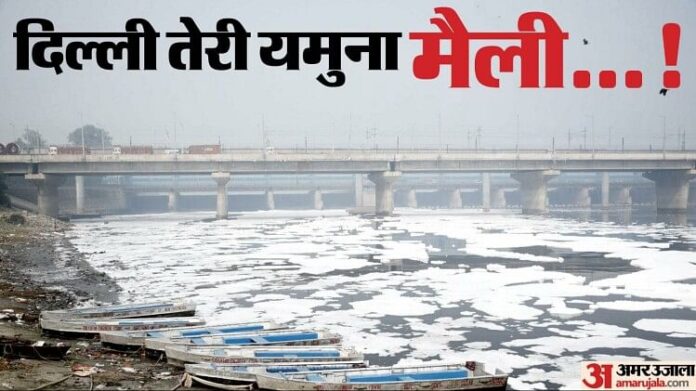Before the beginning of the four-day Chhath festival, Yamuna has covered itself with a blanket of whiteness. The thick sheet of foam spread far and wide seems to be testing the patience of Chhath fasting people. After Okhla Barrage, even the river water is difficult to see. On the other hand, like in the past years, the foam of Yamuna has also increased the political heat in Delhi. Delhi government and BJP have put each other in the dock.
According to an NGT report, the length of Yamuna river is about 1,370 km. Out of this, the length from Palla to Kalindi Kunj is 54 km. The stretch from Wazirabad to Kalindi Kunj is 22 km. This is only two percent of the entire length of the river, but about 76 percent of the pollution occurs in this part. Apart from the monsoon, there is no fresh water in the river for nine months of the year.
On the foam rising suddenly before Chhath, environmentalists say that generally the foam in sea, river and other water sources is formed due to the melting of plants containing fat molecules, but at this time phosphate and nitrate are at the root of the foam in Yamuna. Dr. Ramkumar Singh, a researcher of Yamuna river and currently a professor at the Central University of South Bihar, says that the foam in Yamuna, which remains polluted throughout the year, is more visible at this time because the process of oxygen production, called oxygenation, slows down as the winter progresses. She goes. At the same time, more water is released into Yamuna for Chhath fasts. Foam is formed when water falls rapidly from Okhla Barrage. Ramkumar Singh believes that this is a general principle of the science of polluted rivers. Studies in European countries show that one of the reasons for this could be the sudden increase of algae in the polluted water of the river. This requires a separate study. Only then will the real picture emerge.
On the other hand, Faiyaz Khudsar, in-charge of Delhi’s Biodiversity Park, says that the foam made from the fat of trees and plants is not harmful, but phosphate and nitrate harm the skin. Phosphate reduces the surface tension of water droplets. This produces a large amount of foam. When this water falls from a height, the amount of foam increases. In winter season, the intensity of foam formation increases due to low temperature and increase in air pressure.
This is how phosphate and nitrate come
Phosphate and nitrate come from the soap used in homes. At the same time, factories also increase its quantity. This is also proving that a large amount of untreated sewage is being released into Yamuna. Reducing phosphates in soap will also limit foaming.
